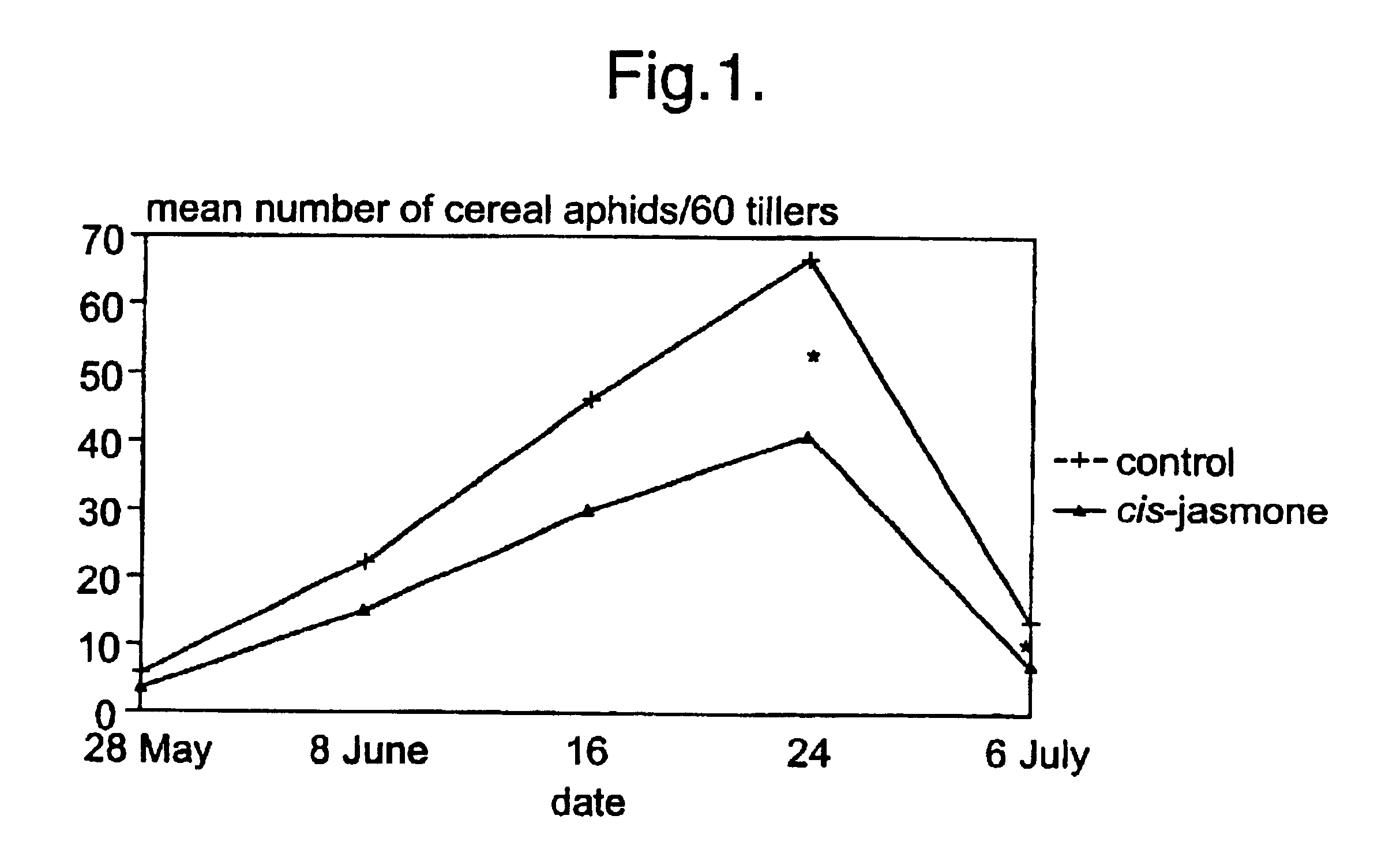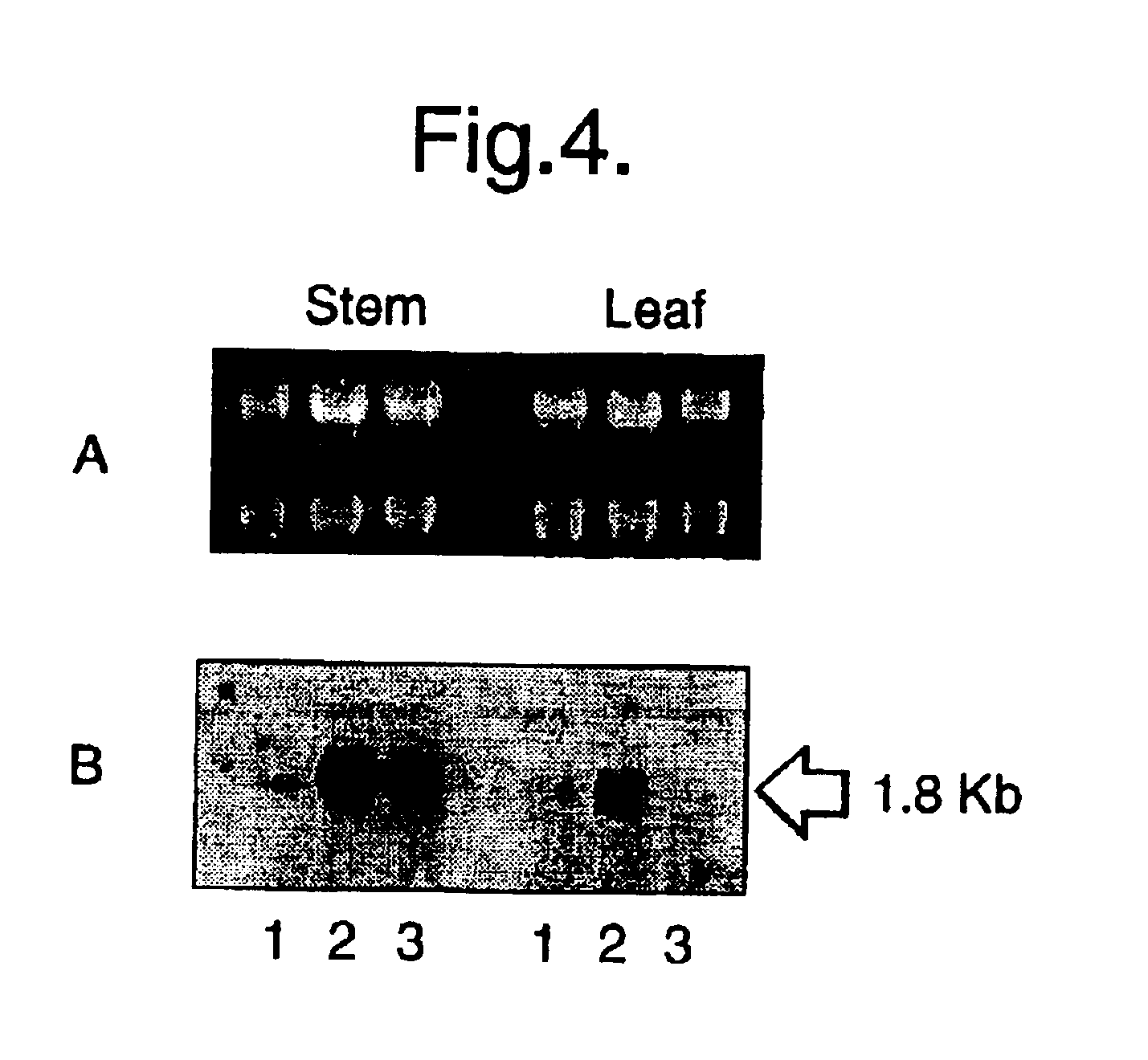Semiochemical
a technology of semiochemical and semiochemical, applied in the field of semiochemical, can solve the problems of insect repellency or attraction
- Summary
- Abstract
- Description
- Claims
- Application Information
AI Technical Summary
Benefits of technology
Problems solved by technology
Method used
Image
Examples
Embodiment Construction
[0028]cis-Jasmone was investigated for behavioural activity with the alate forms of the lettuce aphid Nasonovia ribis-nigri (Homoptera: Aphididae) in a 4-way olfactometer, and was found to be significantly repellent (the mean number of entries into the treated arm was 2.0±0.58, whereas the mean number of entries into the control arms was 4.3±0.58; the mean time spent in the treated arm 0.5±0.16 minutes, whereas the mean time spent in the control arms was 2.1±0.36 minutes; P=Phorodon humuli, where catches in water traps with visual (yellow) attractancy were reduced by 40% (P<0.04) through a slow release of cis-jasmone (2.05 μg / day / trap).
[0029]Field-trapping experiments were also conducted using cis-jasmone against pollen beetles. Attractive yellow bowl traps, at 1 m height and 10 m spacing, were placed in a Latin square design (one row of the Latin square=one replicate; traps are re-randomized to the next row of the square when a mean of 10 beetles are caught per trap). Catches in an...
PUM
| Property | Measurement | Unit |
|---|---|---|
| Fraction | aaaaa | aaaaa |
| Fraction | aaaaa | aaaaa |
| Stress optical coefficient | aaaaa | aaaaa |
Abstract
Description
Claims
Application Information
 Login to View More
Login to View More - R&D
- Intellectual Property
- Life Sciences
- Materials
- Tech Scout
- Unparalleled Data Quality
- Higher Quality Content
- 60% Fewer Hallucinations
Browse by: Latest US Patents, China's latest patents, Technical Efficacy Thesaurus, Application Domain, Technology Topic, Popular Technical Reports.
© 2025 PatSnap. All rights reserved.Legal|Privacy policy|Modern Slavery Act Transparency Statement|Sitemap|About US| Contact US: help@patsnap.com



